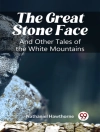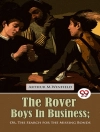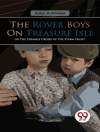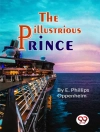Virginia Woolf’s ‘To the Lighthouse’ is a seminal work of modernist literature, distinguished by its innovative narrative techniques and profound exploration of time, memory, and the complexities of human relationships. Set against the backdrop of an artistically rendered Scottish coastline, Woolf employs stream-of-consciousness to delve deep into the inner lives of its characters, most notably Mrs. Ramsay and her husband, reflecting broader questions about gender roles, creative ambition, and the nature of reality. The novel’s divided structure, capturing a span of a decade through its three parts, ingeniously contrasts the fleeting nature of life with the enduring power of art, culminating in a poignant meditation on absence and presence. Woolf, a central figure in the modernist movement, was influenced by her own experiences as a woman in a patriarchal society, as well as her interactions within the Bloomsbury Group, which emphasized artistic freedom and intellectual exploration. Her astute observations of social dynamics, coupled with her struggle against the constraints placed upon women, informed the creation of this introspective narrative, reflecting her belief in the transformative potential of literature to illuminate the human experience. I highly recommend ‘To the Lighthouse’ for anyone seeking a profound literary experience that challenges conventional storytelling. Woolf’s exploration of time and consciousness invites readers to reflect on their own lives, while her lyrical prose serves as a testament to the artistry of the written word. This novel is not just a story; it is an invitation to engage with the subtleties of existence and to appreciate the beauty that permeates the ordinary.
Yazar hakkında
Virginia Woolf (1882-1941) was an iconic figure in the modernist literary movement, renowned for her innovative narrative techniques and thematic explorations of human consciousness, gender, and society. Born Adeline Virginia Stephen in London, Woolf was a central member of the Bloomsbury Group, an influential circle of intellectuals and artists. Her literary career began in earnest with the publication of her first novel, ‘The Voyage Out’ (1915), which hinted at the modernist style she later fully embraced. Woolf’s ‘To the Lighthouse’ (1927), is often cited as a defining work of twentieth-century literature, showcasing her pioneering use of stream-of-consciousness as a narrative device. This novel examines the complex dynamics of the Ramsay family and provides profound insights into life’s impermanence and the subjective nature of reality. Woolf’s literary talent was not confined to novels; she was also an accomplished essayist and critic, with collections like ‘A Room of One’s Own’ (1929) and ‘Three Guineas’ (1938) addressing feminist themes and advocating for women’s intellectual and financial independence. Woolf’s legacy endures, with her writing continuing to inspire and influence readers and writers alike, acclaimed for its depth, its lyrical quality, and its contribution to modernist literature, as well as feminist thought. Sadly, her life was marred by mental illness, and she died by suicide in 1941, leaving behind a body of work that remains vital and widely studied to this day.












